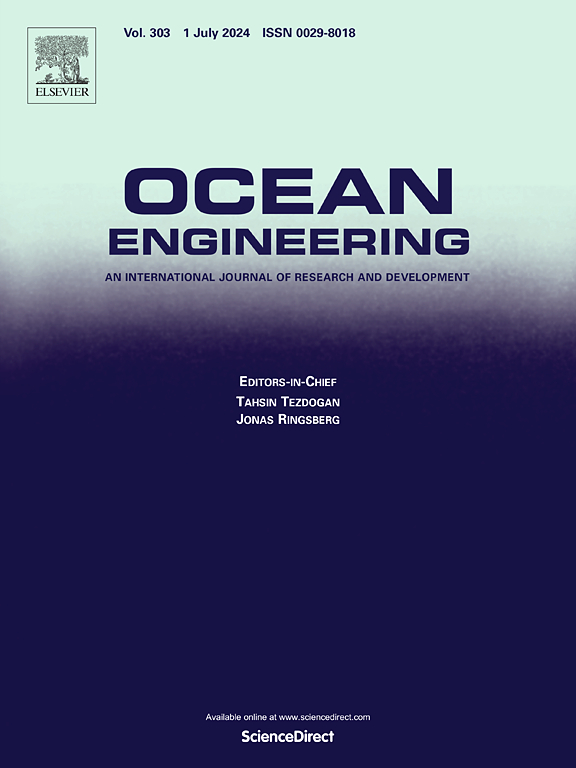Investigation on comprehensive behaviors of the gravity installed anchor in sand
IF 4.6
2区 工程技术
Q1 ENGINEERING, CIVIL
引用次数: 0
Abstract
Although the kinematic behavior of gravity installed anchors (GIAs) in clay has been well studied, the attention to this type of anchor in sand is still limited. It is imperative to undertake a thorough investigation into the bearing capacity and comprehensive behaviors of GIAs in sand, given the marked disparity between the properties of sand and clay. Three parts of study are reported in this paper. First, a theoretical model is developed to analyze the comprehensive behaviors, including diving, keying and pulling out, and the whole trajectory of GIAs in sand. Second, a large deformation finite element model with the coupled Eulerian–Lagrangian (CEL) technique, embedded in a bounding-surface plasticity model that has the ability to reflect the strain hardening of loose sand and strain softening of dense sand, is established to analyze anchor behaviors in sand. Third, by combining theoretical and numerical models, two topics of GIAs in sand are investigated in detail, including the bearing capacities and the comprehensive behaviors. Being an important output, an explicit expression of the end-bearing capacity factor for both diving and pulling out is derived, in terms of the embedment depth, the soil property, the anchor orientation, the loading angle and the bearing area. Effects of various factors on the behavior of GIAs in sand are explored by parametric analyses. The results demonstrate that the anchor is susceptible to being pulled out rather than embedded in sandy seabed. The closer the shackle is to the anchor tip, the lower the soil strength is, and the closer the loading angle is to the horizontal, the easier the anchor is to be embedded in sand. The embedment depth has little effect on the anchor trajectory if the anchor reaches at least the embedment depth of 1.4 times of the fluke length. These findings are helpful to understand further the comprehensive anchor behaviors and to promote the application of GIAs in offshore engineering.
求助全文
约1分钟内获得全文
求助全文
来源期刊

Ocean Engineering
工程技术-工程:大洋
CiteScore
7.30
自引率
34.00%
发文量
2379
审稿时长
8.1 months
期刊介绍:
Ocean Engineering provides a medium for the publication of original research and development work in the field of ocean engineering. Ocean Engineering seeks papers in the following topics.
 求助内容:
求助内容: 应助结果提醒方式:
应助结果提醒方式:


